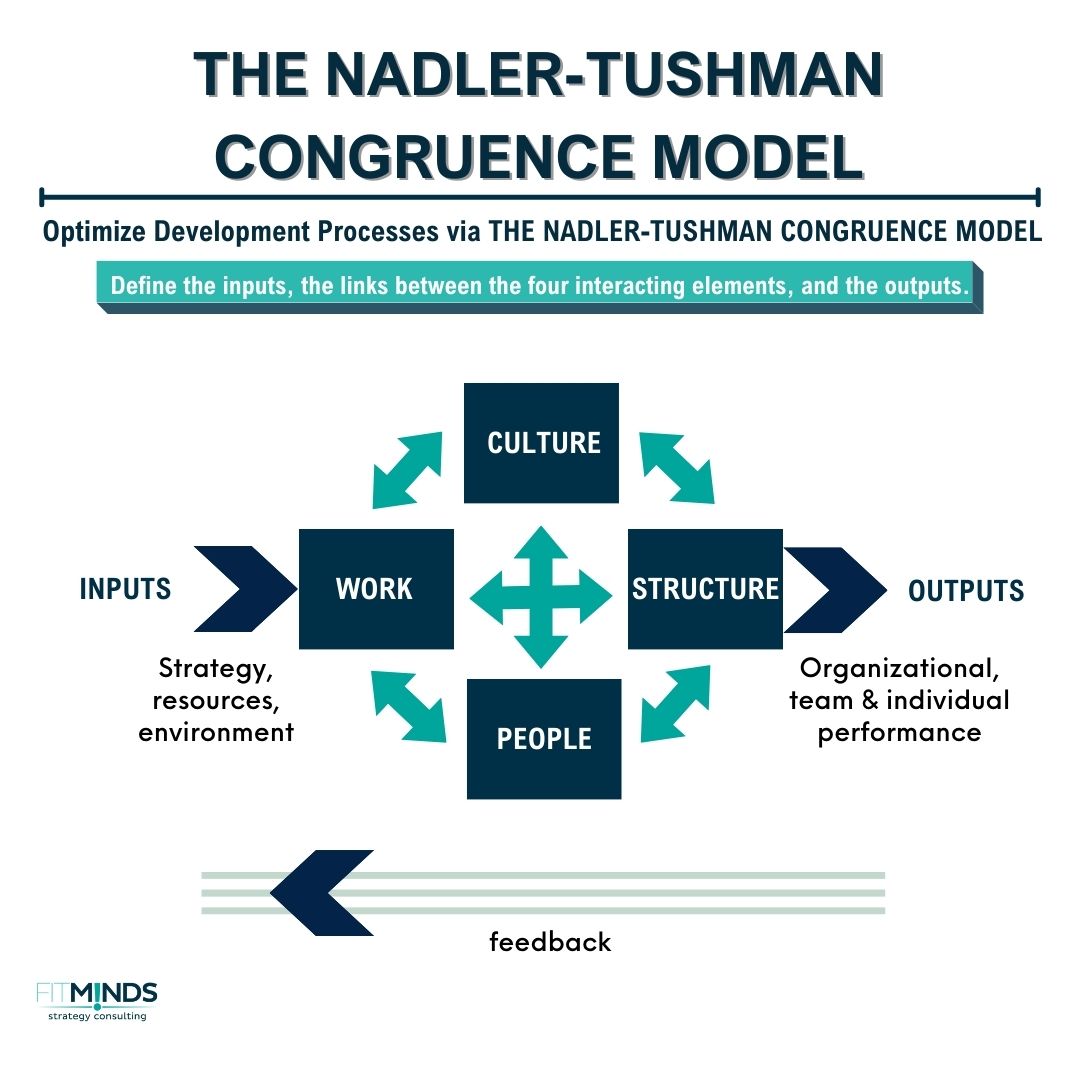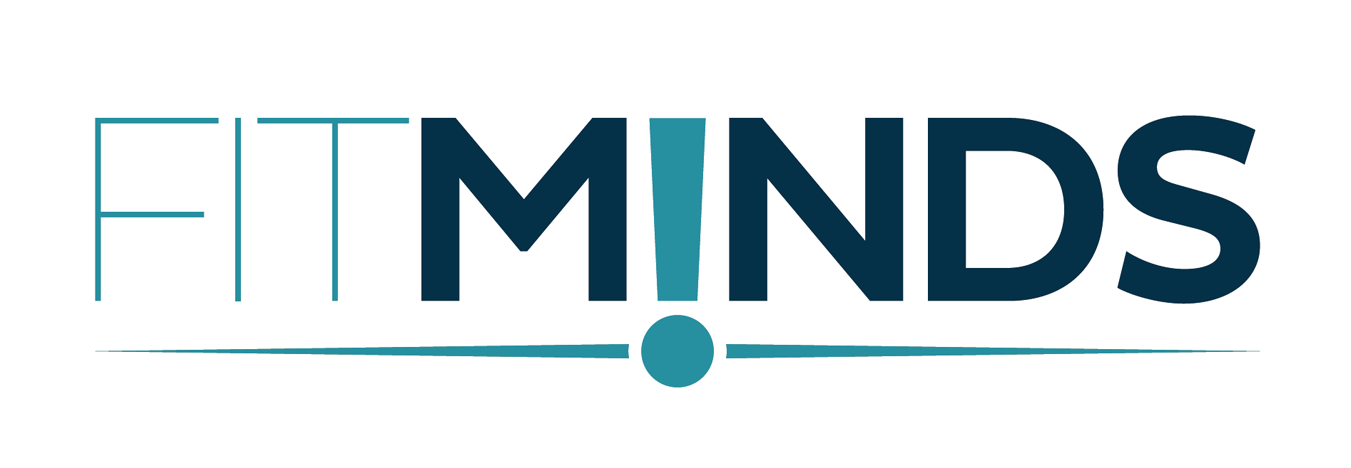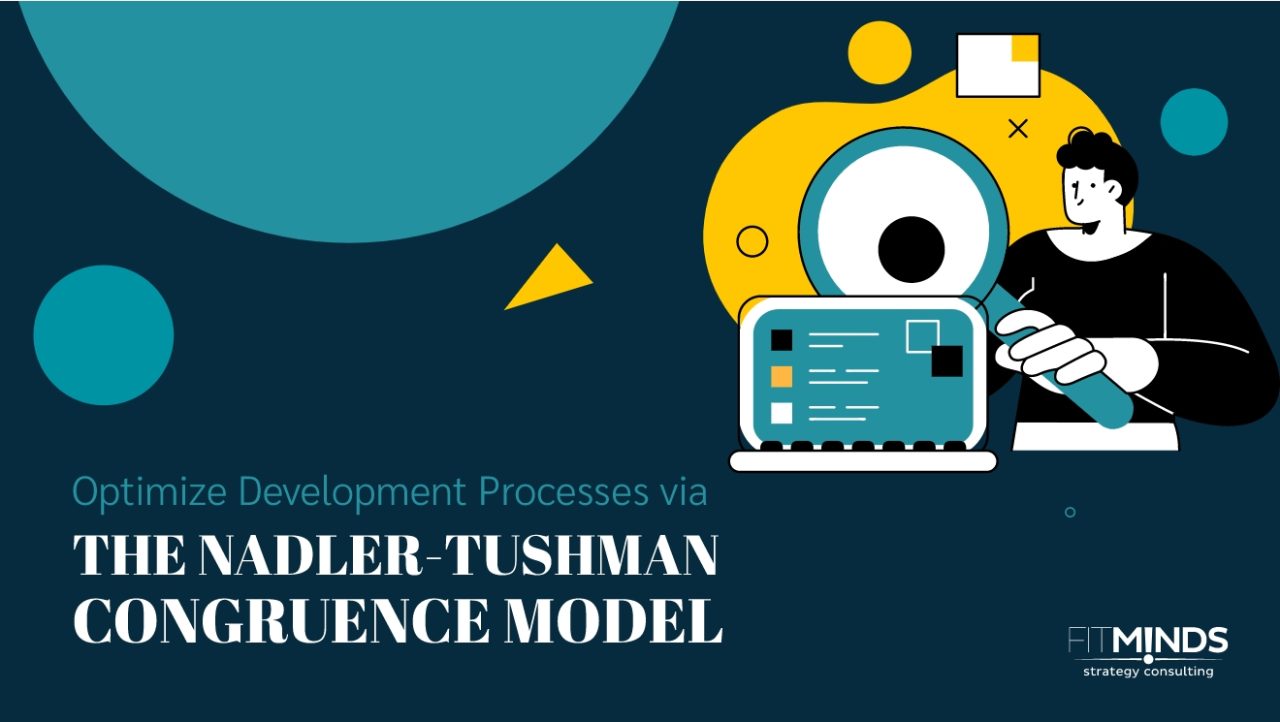The Nadler-Tushman Congruence Model is an organizational diagnostic tool designed to provide a holistic analysis of an organization’s effectiveness by examining alignment (congruence) between its various components. It was created by David A. Nadler and Michael L. Tushman in the 1980s.
Main Benefits of The Nadler-Tushman Congruence Model
The Nadler-Tushman Congruence Model provides a systematic approach for organizations to evaluate and enhance the coherence and harmony among various facets of their operation.
The Nadler-Tushman Congruence Model helps you:
- to understand, diagnose, and strategically align the work, people, structure, and culture to foster an environment conducive to success,
- to identify gap areas within an organization that require attention,
- to navigate and implement strategic organizational changes,
- to achieve higher levels of success and gain a competitive advantage.
Explanation of The Nadler-Tushman Congruence Model
The Nadler-Tushman Congruence Model involves a systematic approach to organizational analysis.
The first step of the model is to define the inputs, the four interacting elements, and the outputs.
Input components encompass the following:
Strategy: The strategic direction established at the organizational, team, or individual level.
Resources: The assets, capabilities, and means available to an organization, team, or individual to achieve their objectives.
Environment: The external business environment that encompasses and influences the organization, team, or individual.
Once the input components are defined, the focus is on the four interactive elements: work, people, structure, and culture. The model recognizes that an organization functions effectively when these components are in harmony with each other.
Work: Work represents the critical tasks and activities that underpin an organization’s performance. It involves understanding what work is done and how it is processed within the organization.
People: People refer to the individuals within the organization who interact to accomplish the tasks. It involves analyzing the skills, knowledge, experience, and attributes of those involved in the work.
Structure: Organizational structure encompasses the formal layout of the organization, including its systems, policies, processes, and hierarchies. It defines how tasks are organized, coordinated, and executed.
Culture: Culture represents the shared beliefs, values, and norms that influence behavior within the organization. It’s often intangible, but it has a significant impact on organizational performance.
The links between the four elements are examined, and organized into six pairs:
- Culture and Structure
- Culture and People
- Culture and Work
- Structure and People
- Structure and Work
- People and Work

This review provides a comprehensive view of an organization, allowing the identification of areas of alignment and potential areas of misalignment.
Outputs from the interactive review include organizational, team, and individual performance. Performance assessment occurs at multiple levels, with organizational performance focusing on critical metrics like units sold and financial indicators aligned with organizational goals. Group and individual performance evaluations extend to departmental or project-level metrics, ensuring alignment with the overall organizational strategy.
How to Apply The Nadler-Tushman Congruence Model
To apply The Nadler-Tushman Congruence Model to your business, FITMINDS is providing an adoption of the model that fits your company and your company’s needs. By using The Nadler-Tushman Congruence Model, businesses can optimize development processes.
Contact us to get more information or discover your probable personalized roadmap for The Nadler-Tushman Congruence Model.
Additional Tips and Readings
- For a management method used to align an organization’s goals and objectives, you can read The Hoshin Planning.
- You can learn more about organizational strategy models with the Miles and Snow Organizational Strategy Model.
- For a step-by-step strategic planning tool, you can read the ADKAR Model
- You can read Capability Maturity Model Integration (CMMI) to optimize development processes.
Contact us to achieve higher levels of success and gain a competitive advantage via The Nadler-Tushman Congruence Model.



13 comments
Pingback: buy cheap androxal generic in united states
Pingback: buy cheap enclomiphene usa drugstore
Pingback: order rifaximin generic is good
Pingback: ordering xifaxan usa mastercard
Pingback: how to order staxyn generic mexico
Pingback: discount avodart uk generic
Pingback: how to order dutasteride generic real
Pingback: buying flexeril cyclobenzaprine generic for sale
Pingback: online purchase gabapentin
Pingback: cheapest buy fildena buy in australia
Pingback: buying itraconazole usa generic
Pingback: nízká cena kamagra z kanady
Pingback: medicament kamagra pharmacie emplette contre
Comments are closed.